|
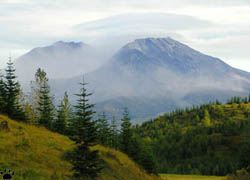
Mount Saint Helens, Washington.
Volcanic eruptions - Part 2
|
In late September 2004, a swarm of earthquakes under Mount
Saint Helens in Washington announced the upward movement of magma towards the
crater of the volcano. An eruption seemed imminent, so I jumped into my car and
drove there. The eruption was a bit of a disappointment, but at least I had a
digital camera and got more nice pictures there than at all eruptions I'd seen
earlier.
|

Mountains north and east from the volcano were
stripped of forest by the lateral blast of 1980. |
Saint Helens is famous for the explosive eruption
of 1980, which killed 58 people, mowed down almost 300 square miles of forest,
dumped ash over most of the state, and blew off the mountain's top, leaving a
huge crater. |
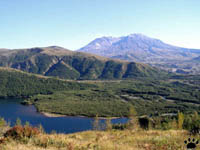
In the past 24 years, the vegetation recolonised
the slopes all the way to the cone of the volcano. |

Since 1980, a lava dome has grown inside the crater. |
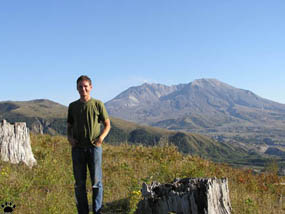
Huge stumps still dot the blast zone. |
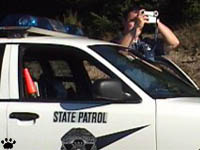
For the police, the road closure was a welcome
excuse to come over and watch the eruption. |
It was obvious that 2004 eruption would be much
smaller. Still, the police closed the last few miles of the access road. Thousands
of tourists and TV crews converged on the stretch of the road that was
still open. |

1980 eruption shot rocks the size of a house
up to 4 miles (6.5 km) away from the crater. |
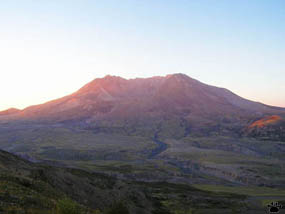 |
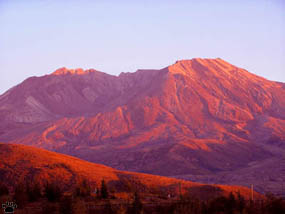 |
| Sunrise and sunset at Saint Helens. |
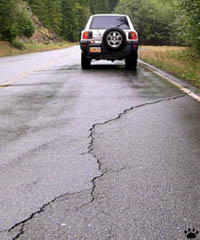
At night, small earthquakes would often wake me
up as I was sleeping in the car. |
I spent three days there, mostly enjoying the view
from an observation point at the road's end. People had been evacuated from there,
so deer, elk and other wildlife kept me company. In sunny weather, the only noise
was the sound of helicopters carrying volcanologists around the mountain. Later
it was only rain and wind. |

Mule deer (Odocoileus columbianus) were
grazing fearlessly within 3 miles of the crater. |

A deer and my car at an empty parking lot. |
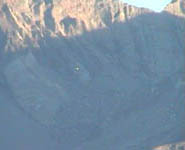
A helicopter flying in front of the crater. |
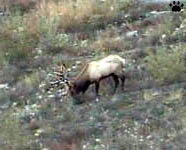
Elk (Cervus canadensis), Saint Helens. |
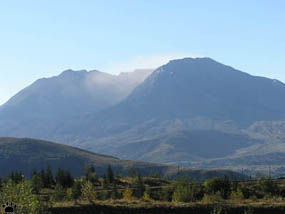
Steam in the crater before the first explosion. |
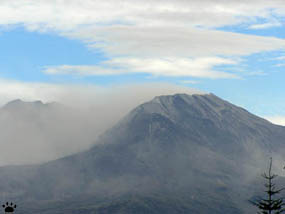
Steam in the crater on the third day. |

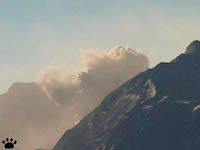
Beginning of an eruption. |
For the first two days, the crater would fill with
smoke each morning, then the volcano would erupt, producing a few clouds of steam.
The first few clowds of each round were white, then ash would mix up, so that the last few would
be almost black. Each eruption lasted for less than half an hour. On the morning
of the third day, the crater again filled with smoke, but there was no eruption. |
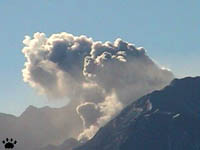
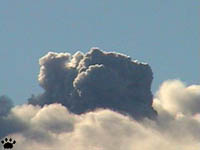
Lapland birches (B. tortuosa), Kolsky Peninsula. |
 |
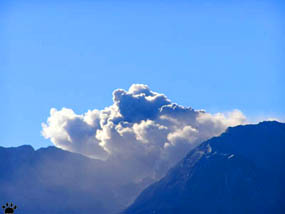 |
| The first eruption. |

Steam and ash trail of the second eruption. |
Each of the two eruptions produced a long trail
of steam and ash. It would slowly drift downwind, and eventually dump a thin layer
of ash on a small town about twenty miles to the northeast. |
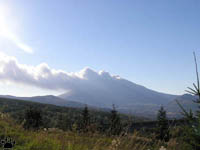
Steam and ash trail of the second eruption. |
 |
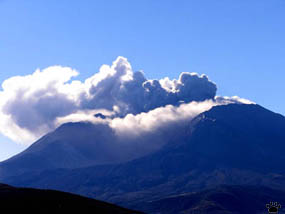 |
| The second eruption. |

Steam and ash trail of the first eruption. |
Strangely, the steam trails could still be seen
in the sky many hours after the eruptions. |
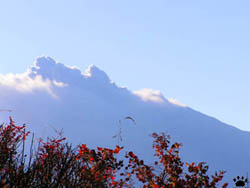
The second eruption. |
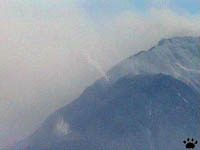
Dust devil (ash devil?), Saint Helens. |
On the third day, the weather got worse. Wind was
spinning huge dust devils over ash-covered slopes near the crater rim. Orographic
clouds formed over the summit, then slowly drifted away. |
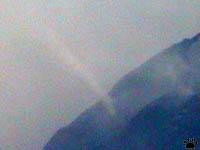
Dust devil (ash devil?), Saint Helens. |
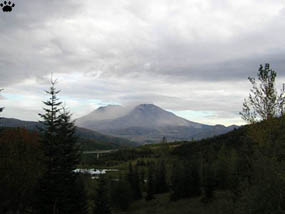 |
 |
| Deteriorating weather, Saint Helens. |
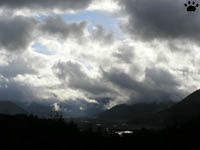
Day Four, Saint Helens. |
On day four, the visibility dropped to zero, and
I decided it was time to leave. It proved to be a good decision: nothing interesting
happened over the next week, although a new lava dome was slowly growing inside
the crater. |
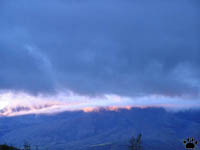
Day Four, Saint Helens. |
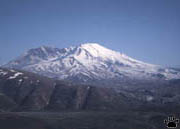
The first snow, Saint Helens.
Part 3. Nyiragongo
Back to Part 1
Home
|

